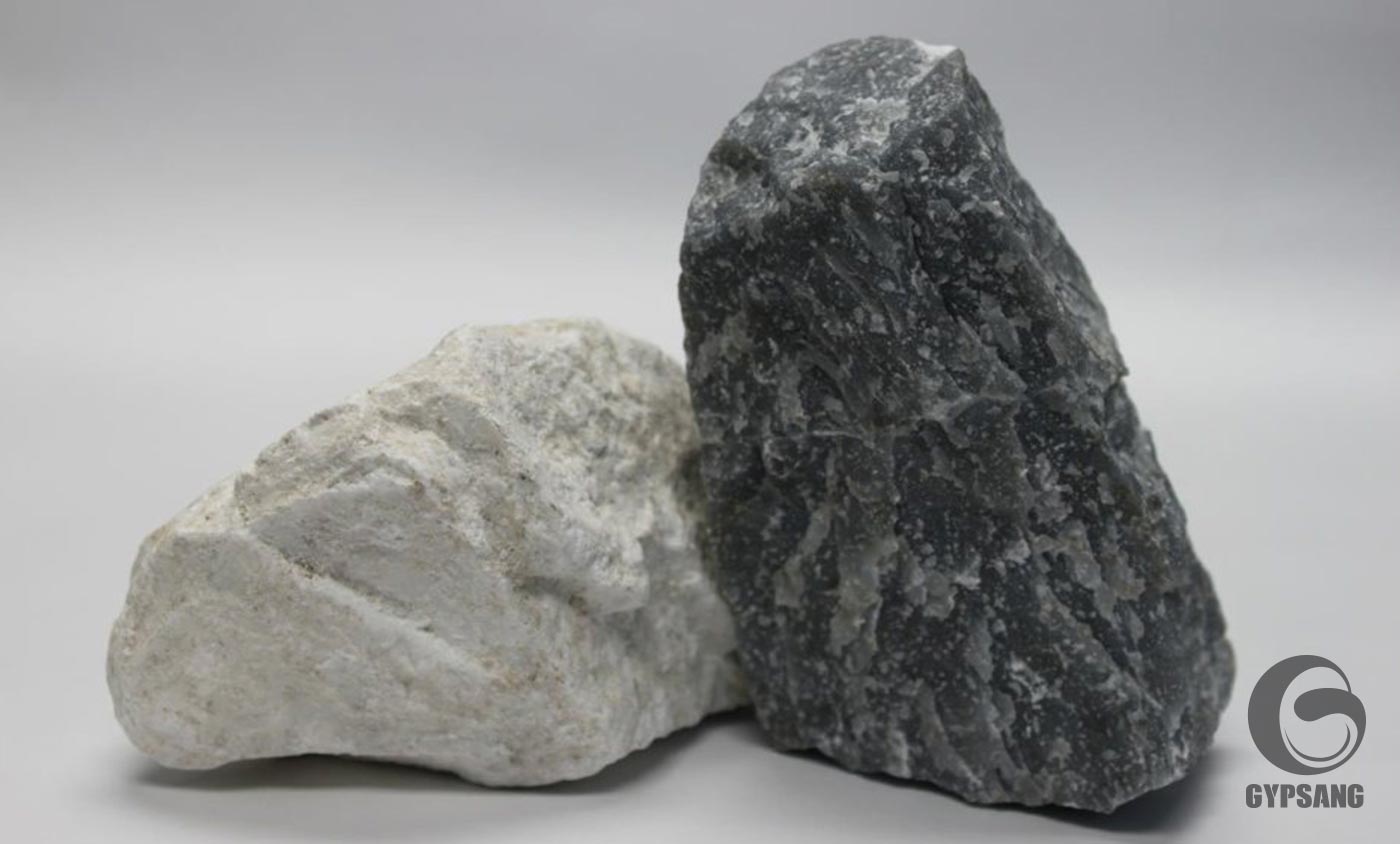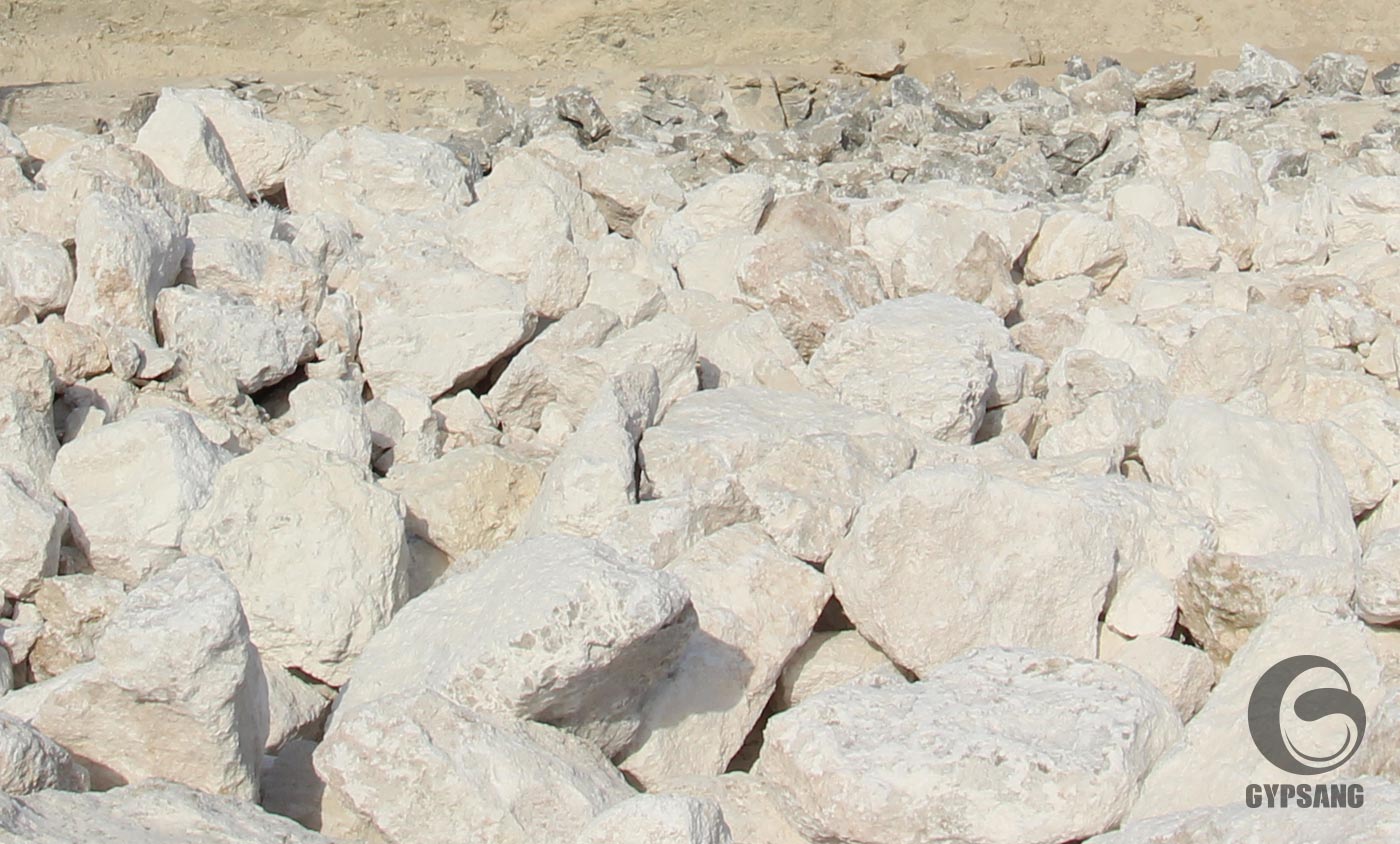What is gypsum?
Gypsum, or calcium sulfate dihydrate, is a very soft mineral with the chemical formula CaSO4·2H2O, also known as “aqueous calcium sulfate”. In fact, gypsum is the same as natural hydrated calcium sulfate found in several crystalline forms. It is also abundantly found as relatively thick layers in the Earth’s solid crustal outcrops which are explored and extracted.
Having been extracted from mines such as lime, gypsum, is heated inside special furnaces up to about 180 °C until water molecules lose 2/3 of their crystallization and can be used as moldable gypsum in construction of buildings. The chemical reaction of gypsum to plaster conversion is:
CaSo4, 2H2O _______CaSo4, 1/2H2O + 3/2H2O
Notably, calcium sulfate in the evaporative form is obtained as gypsum (2H2O, CaSo4) and anhydride (CaSo4). In the following section, we will further describe the two forms mentioned above.
Gypsum
Gypsum is a common, commercial calcium sulfate mineral. And since calcium sulfate gypsum comprises two water molecules, it has a functionality to molecular water. Gypsum loses about three-quarters of its molecular water at temperatures of about 180 °C and converts into 2H2O / CaSo4, which is called chalk or calcined.
If this material is exposed to water, it will reabsorb the lost molecular water and turn it into gypsum or plaster. In fact, it results in chalk or calcined gypsum. Note that the gypsum available on the market is the same as chalk, different forms of which can be obtained by heating gypsum at different temperatures.
The purely complete gypsum is colorless or white. In mass and homogeneous samples, gypsum is found in carmine, red, brown, yellow and gray colors, depending on presence or absence of iron oxide, clay, lime, silica and carbon impurities. Under the microscope, gypsum contains granular, fibrous or porphyroblastic tissues. In terms of Mohs scale, the hardness of gypsum is 2, it is easily scratched by the fingernail and is blurred by the loss of water under heating conditions.
Pure gypsum contains 9.20% water, 6.46% So3 and 5.32% Cao. According to ASTM International, the minimum purity required for gypsum in industrial cases is 70% gypsum. However, most commercial types of gypsum contain 75 to 95% purity.
- Anhydrite
Anhydride or anhydrite with the chemical formula of CaSo4 is known as anhydrous calcium sulfate, which cannot be used as plaster in construction materials. It has limited applications in other industries. Anhydride is used in preparation of sulfuric acid and calcium sulfur.
Gypsum typically has a layered structure, with a hardness of 5.2. It can be scratched by the fingernail, while the anhydride hardness ranges between 3 and 5.3 and cannot be scratched by the fingernail. Anhydride is converted into gypsum due to its high solubility and dewatering, and is therefore rarely found. Gypsum crystallizes in the monoclinic system, while anhydride does so in the orthorhombic system.


Leave A Comment